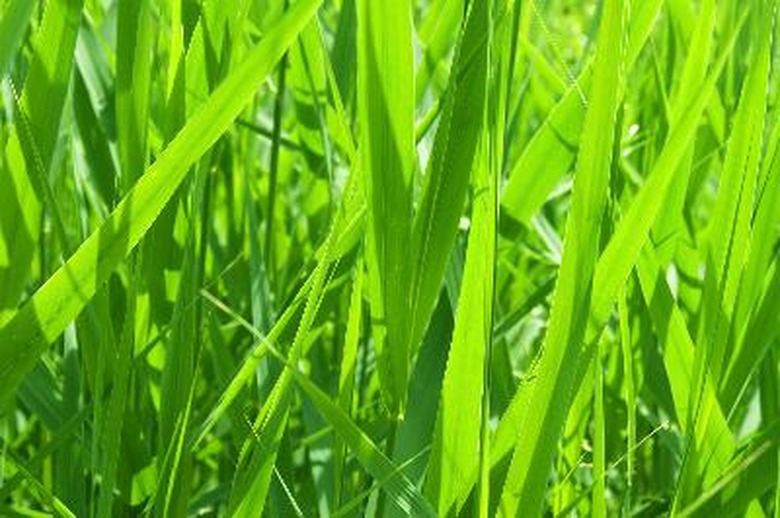What Does Fertilizer Do To Grass?
Adding a fertilizer to your lawn will make the grass greener and stronger, as long as you apply the right amounts of the right kind at the right time. With so many complications, it may be helpful to understand what each component of lawn fertilizer does so you can better understand your overall lawn care needs.
Plant Nutrients
Plants require up to 18 nutrients in order to grow correctly, but only three of them — nitrogen, phosphorus and potassium — are used in quantities that might require supplements. Fertilizing a lawn is simply the process of adding the deficient elements to the soil so the lawn has the best chance of success. Lawn fertilizer is sold with a numerical analysis on the package, usually something like 10-10-10 or 20-4-8, with the three numbers corresponding to the percentage of nitrogen, phosphorus and potassium, in that order, in the fertilizer.
Nitrogen
Of all plant nutrients, nitrogen is required in the largest amounts and is the most common nutrient to be deficient in soil. Nitrogen plays a role in almost all internal processes, from synthesizing proteins to creating chlorophyll. Lawn fertilizers have two types of nitrogen: quick release and slow release. Quick-release fertilizers will have the grass green and growing within a few days, but will require more frequent applications. Slow-release nitrogen will take a little longer to show effects, but will require less frequent applications and has a much lower chance of applying too much nitrogen.
Phosphorus
Phosphorus is perhaps more important to a lawn's overall health than any other nutrient, but it is required at much lower levels than nitrogen. Phosphorus is required for just about every energy process inside the grass, including amino acid production, photosynthesis, glycolysis and respiration. Phosphorus is especially important for new grass, as it promotes root growth and stimulates blade growth.
Potassium
While potassium isn't used in the basic cell structure of the grass, it is required for many of the grass's underlying growth processes. Potassium is a required element of photosynthesis and helps facilitate cell division. Potassium also increases the turf's resistance to traffic and disease and even drought tolerance. Potassium is also known for helping the grass survive through the winter months.
Fertilizer Misuse
Since fertilizer is designed to supplement depleted or deficient soils, it is important to only use the right amount, and the right kind, of fertilizer. Using too much nitrogen, for example, can overstimulate growth causing the blades to grow strong but the roots to be too weak to hold the plant. Nitrogen can also cause damage to the grass blades if you apply fertilizer and forget to immediately water the plants to knock the fertilizer off the grass and into the soil. Elevated levels of phosphorus and potassium don't hurt the grass as much as nitrogen, but the excess levels will leach out of the soil and into the groundwater. Some locales may even have laws against applying phosphorus and potassium fertilizers except in specific circumstances.
